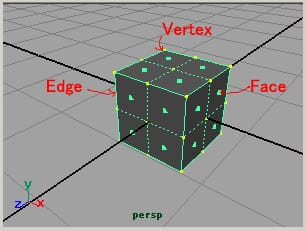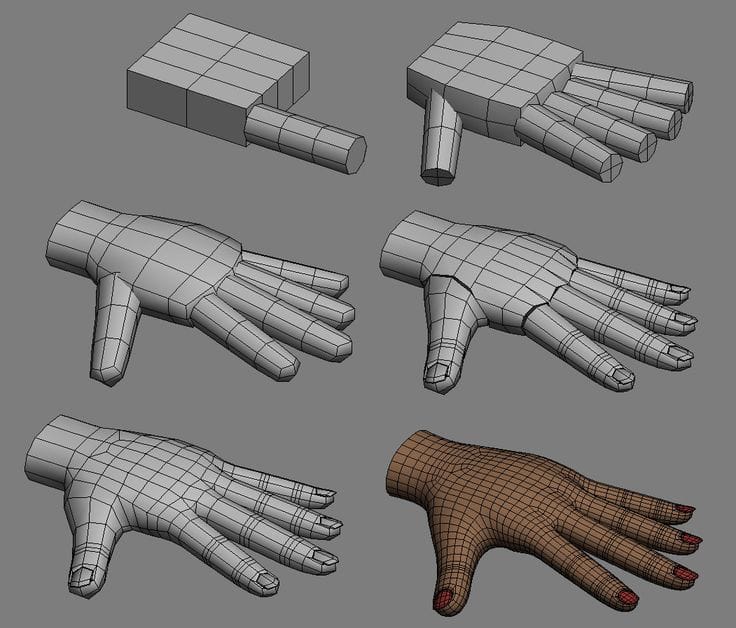Introduction to Exploring Animatable Characters in Maya
|
ACE – Technical Workshop Descriptor
Libby Bass Technical Instruction Area: Animation 5Academic Programme/Level/Workshop code:
Date: From 03.01.2017 10.00-16.00 Room Number: 4B06 Maximum Numbers Possible: 10 Pre-requisites/Skill Levels/Workshop Preparation:
It's a good idea to have a play on Maya and watch any training videos if possible before attending the workshop. Students must bring: A portable hard drive or large capacity pen drive to save files New Language and Vocational Terms Introduced: T-pose, topology, box modelling, Polygons - vertex, edge, face. Key Processes/Technologies Covered: Exploring the Maya Modeling interface. Setting up image planes, polygon modeling, box modeling, extruding, adding edge loops, HumanIK, skinning. Duration of Workshop: 2 Days Character Modeling Process1. Polygon modeling/Box Modeling
Polygons are used in computer graphics to compose images that are three-dimensional in appearance. Usually (but not always) triangular, polygons arise when an object's surface is modeled - vertices are selected, and faces are extruded. Polygon models consist of vertices, edges and faces. Box modeling is a method of modeling starting with a polygon box and extruding faces, adding edge loops and manipulating vertices to create the desired three-dimentional shapes. 2. HumanIK/Rigging
HumanIK is a built-in Maya rigging system which enables you to quickly and easily create a bipedal animation rig and control panel for your characters. Once created you can use the HumanIK control panel to animate you character using either IK or FK hieracrhies. There's other rigging systems available, and you can create custom rigs using Maya's rigging tools and joint creation. Handouts/Tutorial
|
About Autodesk Maya
Autodesk Maya is industry standard software for CG modeling, animation and VFX. It's used locally and internationally for film, TV and games by companies such as Aardman Animaiton, Framestore, Blue Sky Studios, Industrial Light and Magic, to name but a few! Maya is equipped with a cross-platform scripting language, called Maya Embedded Language or MEL. It is provided for scripting and a means to customize the core functionality of the software. Technical Learning Objectives: Students will be introduced to the Maya interface. This workshop will concentrate on creating a simple character using polygons and box modeling tequniques as well as skinning and rigging systems such as HumanIK. At the end of the workshop students should have a basic understanding of these modeling tequniques in Maya. The workshops Aims Are : To introduce the students to Maya, giving them a basic understanding of the Maya interface - including the modeling, HumanIK and skinning tools. To demonstrate the capabilities of Maya and to point students in the right direction to online tutorials and resources. Links to Relevant Websites1A. Topology
Topology is concerned with the flow and organisation of edges on a given 3D model. Good topology allows your model to deform correctly when it is skinned and animated. It has enough detail to deform properly, but not too much as to cause difficulty with skinning and mapping. 3. Skinning
Maya's Bind Skin is a method of binding the mesh to the joints/skeleton of your character so the mesh moves with the rig when animated. Once applied you can use the Paint Skin Weights tool and the Component Editor to specify how much influence each joint has on each vertex of your mesh. This plays an important role in enabling your mesh to deform in the correct way when animated. | ||||||
UWE 3rd Year Student Films - created in Maya
|
|
UWE 2nd Year Student Film - created in Maya
|
|
Online Tutorials
|
|
|
Descriptor entry last modified on --/--/2012





